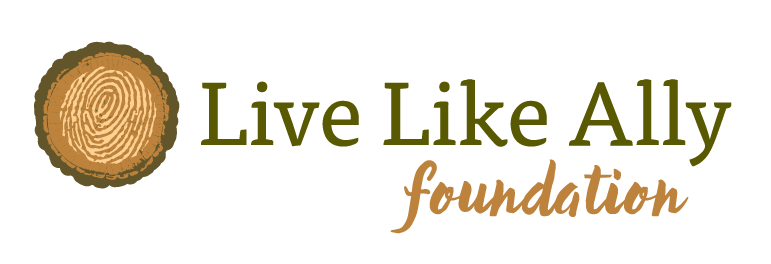This post was written by Emily Willen.
For my sister Allison, who taught me how to live.
Transformation is a painful process.
Whoever told the cheerful story about the caterpillar effortlessly morphing into a butterfly was wearing a pair of rose-colored glasses. Certainly they had never been through such a profound metamorphosis themselves. If they had, they would know with absolute surety that the last thing such a transition could be described as is “easy.”
Far from it, actually. A caterpillar does not become a butterfly without struggle. In our own lives, we do not grow and change without facing adversity. As nice as it would be, the world simply isn’t set up that way. At the deepest level, true transformation is as raw and ugly as it gets. There are no rose scented-flowers, no guide maps, no celebratory parties along the way.
It is not a path for the faint of heart. When adversity strikes our lives, we are faced with a choice. The choice is simple: either you can chose to fall into the role of the victim and become bitter, thus remaining as a caterpillar forever; or you can chose to find the strength within yourself to use the pain as a catalyst to transform, thus becoming a butterfly. The latter choice is, of course, preferable because it allows us to evolve into the highest version of ourselves that we can be. It is also the more difficult choice.
Perhaps a more fitting analogy for the process of transformation is that of serotiny. Months ago, my sister Allison—nature lover that she was—told me that serotiny was a natural process that occurs during forest fires. She explained that certain plants and trees were only triggered to release their seeds during a fire. Contrary to popular belief, then, the naturally occurring forest fires served an important function in the delicate ecology of the forest. Were raging and destructive flames not there to burn up the forest, many seeds and plants harboring new life would not be activated. Their potential would be lost.
Sometimes a fire unexpectedly comes raging into our lives. If we were not expecting such a violent storm, it has the potential to knock us completely off our feet. A fire can come out of nowhere and annihilate everything and anything we relied upon to give us a sense of security. This “fire” can take different forms: perhaps it is a spouse’s request for a divorce that we didn’t see coming, the loss of a job, or the death of a loved one. Whatever variety it takes, the destruction it leaves behind is the same. If your life was a forest and suddenly a ferocious and powerful fire came sweeping through, burning away every remnant of the life you had built for yourself, what would you do? And herein lies the choice.
To allow the fire to burn and create room for new growth is to choose to transform. There is little that we actually have control of in this life. We don’t get to choose if and when a fire sweeps through our lives. Often we don’t get any say in how this fire manifests or the people we love who are affected by it. And during the aftermath of the fire, we can’t stop those affected from suffering and crying out from the devastation caused by the flames. All we can do is decide how we want to respond.
In the months following my sister’s death, her explanation of serotiny began to reverberate inside of me. To me, it represents a far truer depiction of the process of transformation than any other analogy. To transform is to walk into the fire; to burn away the old so that new seeds harboring fresh life can be born. It is only by going through the fire that this new potentiality can manifest. Like in alchemy, we too must go through the flames in order to mold ourselves into gold.
The fire, however, is painful. It can be so painful that at times we may wonder if we have the capacity to survive. We may even wish that the vicious flames would destroy us just to put an end to our suffering. We may think that we lack the inner resources and resiliency to go on in such brutal circumstances; at times it may seem far easier to allow ourselves to give into the flames and burn away like the rest of the forest.
But then, gradually, the fire begins to wane in its intensity. This happens slowly at first, just for moments at a time—sometimes so slowly that we may even wonder if the fire actually ceased or if we just imagined it had. Yet those moments do exist and eventually we begin to recognize them. During those reprieves is when we start to see the emptiness and space that was created as a result of the fire. If we look deeply enough, we start to understand that in that empty spaciousness is ample room for new growth to take hold.
This new growth—these new seeds awakened through the process of serotiny—may take quite some time to become apparent. Indeed, the new seeds may not bloom in any tangible fashion for weeks, months, or years. For quite a while they may lay pregnant in the ground in a process of gestation. It is important for us to honor this part of the process and allow it to unfold in its own time. Just as it is impossible to control a fire, so is it impossible to rush the slow and steady progress of nature.
Regardless of when the seeds begin to sprout, the significant factor is that we recognize that they are there. These precious seeds were activated by and through the destructive fire; and as agonizing as the fire was, the new seeds must be honored for what they contain. There is no fire that burns forever. Destruction and death are as interwoven into the fabric of life as birth and creation. Forest fires, often so misunderstood, are an integral part of the cycle.
And what if the seeds have not yet come to fruition? What if the fire was one so large and so destructive that the forest is still thick with smoke and debris? In time, the smoke will clear, little by little. Until then, there is nothing else to do except to remain in the empty space left behind by the flames.
My sister Allison once wrote, “Your experiences develop you into a stronger person, even if it’s hard to understand.” Sometimes we don’t understand why a fire comes raging into our lives. We don’t understand what caused the fire and we may not know how to start picking up the pieces. But we can make the conscious choice to become stronger because of it. We too can choose to bloom, like the serotinous seeds in the aftermath of the fire; we too can choose to transform and to grow, to blossom into everything we were meant to be.


